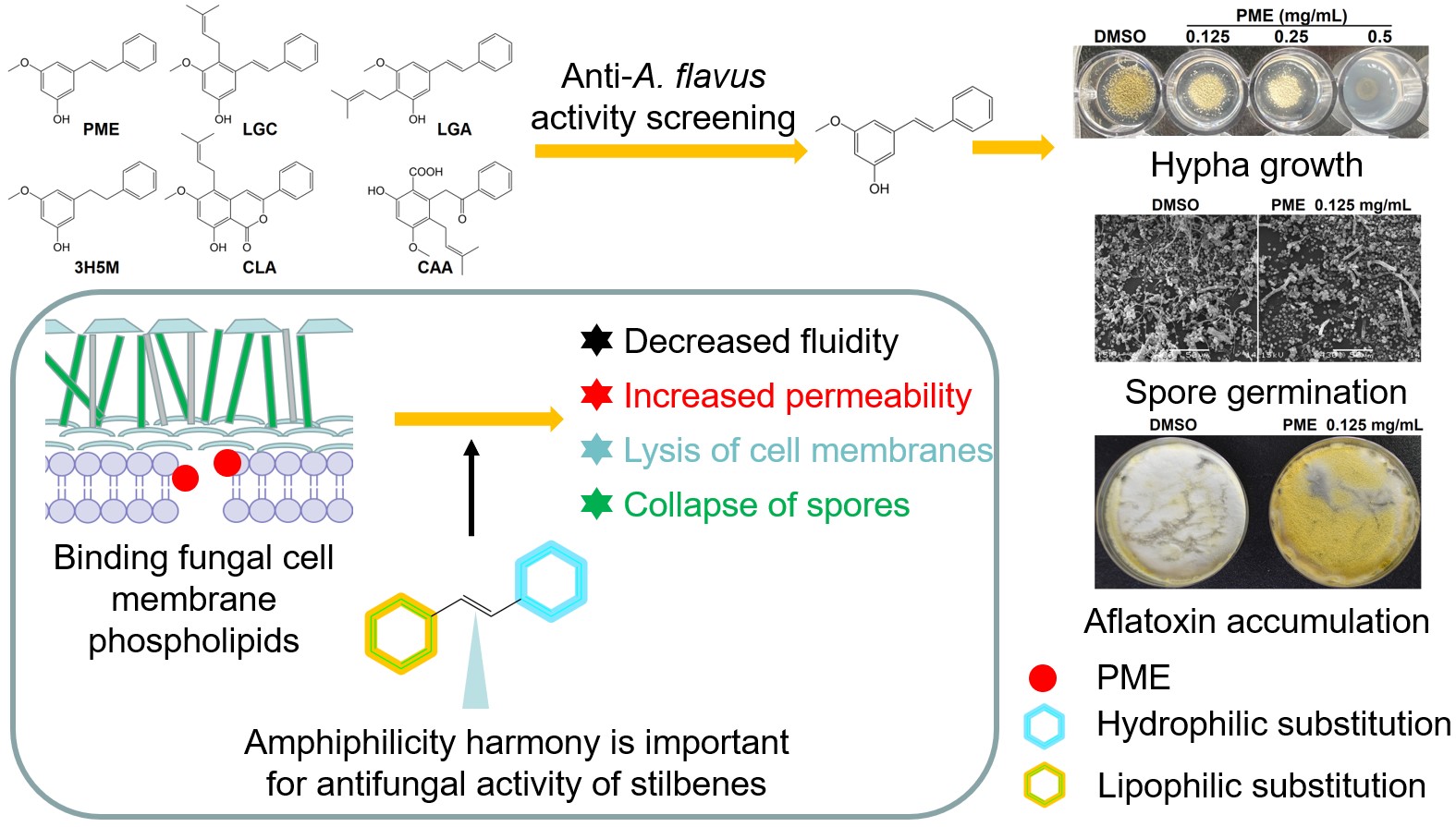

(植源抗真菌活性先导化合物发现和作用机制)
Aspergillus flavus is a common fungus that can infect agricultural products, medicinal herbs and processed foods. It can produce aflatoxins during infection. Uncontrolled exposure to aflatoxin may cause 28.2% of all liver cancer cases globally. A.flavus has caused significant losses to agricultural economy, with about 16 million tons of maize lost every year. In addition, A. flavus is an opportunistic pathogen, which could cause Aspergillus disease in people with low immunity.
Due to the strong toxicity and pathogenicity of aflatoxins, more than 100 countries and regions have limited the maximum allowable content of aflatoxins in food and feed. In China, the National Food Safety Standard for Maximum Levels of Mycotoxins in Foods (GB 2761-2017) also sets limits for Aflatoxins in food. Control of A. flavus is an important event concerning world agricultural production, food safety and human health. In view of the advantages of chemical control, research and development of novel, efficient and green antifungal drugs is still the first choice for human control of A. flavus.
Pigeon pea (Cajanus cajan (L.) Millsp.) is a medicinal and edible plant, which is rich in stilbenes. Recently, the Qiu research group from South China Botanical Garden of CAS isolated pinosylvin monomethyl ether (PME) from pigeon pea. PME shows the strong anti-A. flavus activity and has a broad antifungal spectrum with negligible hemolysis. PME inhibits spore germination of A. flavus and accumulation of aflatoxin B1. Mechanistic studies showed that PME bound to the phospholipids of cell membrane, resulting in increased permeability and decreased fluidity. Further metabolic analysis shows that PME causes lysis of cell membranes and subsequent collapse of spores, which resulted in the similar phenotype of cell wall autolysis. Structure-activity relationship analysis revealed the importance of maintaining a certain chemical lipophilic and hydrophilic balance by substituent groups for antifungal activity of stilbenes. Together, natural stilbenes are promising antifungal candidates for food, pharmaceutical and agricultural industry.
The research was published as the cover story in the Journal of Agricultural and Food Chemistry (https://doi.org/10.1021/acs.jafc.2c07240) , and was supported by the National Natural Science Foundation of China and STS Key Project of Chinese Academy of Sciences. Professor Shengxiang Qiu from the South China Botanical Garden of CAS is the corresponding author of the paper. Research assistant Dr. Xiancai Li is the first author of this paper. Doctoral candidate Liyuan Yao was responsible for the extraction, separation and structural identification of PME and other analogs.



